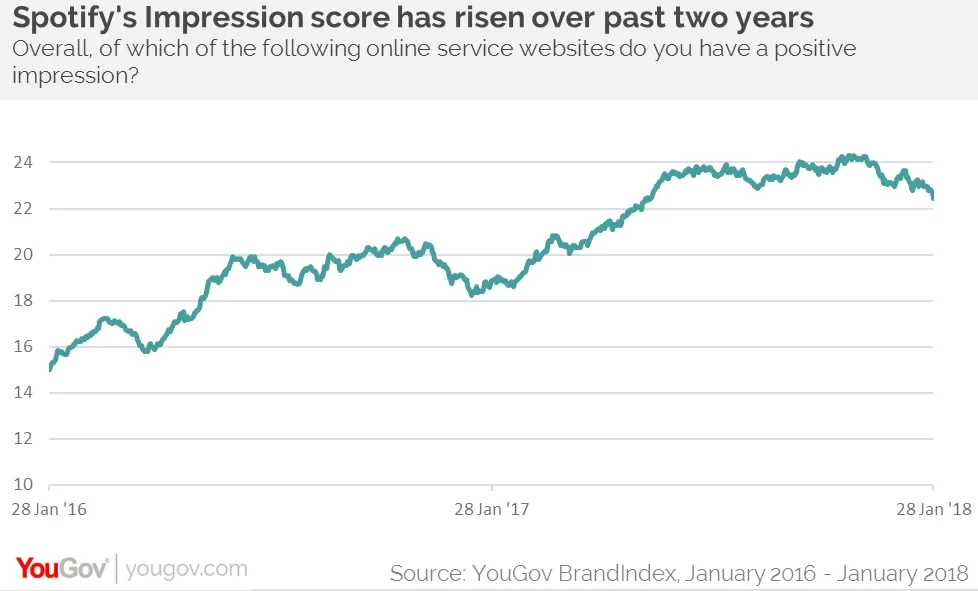With Spotify reportedly planning on floating on the New York Stock Exchange this spring, it’s a good time to look at how consumers view the brand in the UK.
The music streaming service’s impact and growth over the past decade is impressive, all the more so as there haven’t been many global internet successes out of Europe.
However, it has not escaped criticism. It has been condemned in the past by music artists and fans for not paying enough in royalties in order to list songs on its service.
YouGov brand tracking data shows that consumer perception of Spotify has grown year-on-year. Its impression score among all respondents (whether someone has a positive impression of the brand) has risen from 15 to 23 over the past two years.

Spotify has been effective in appealing to new customers with a variety of offers for prospective users. In addition, its essential MO is to provide a cheaper way of accessing music than provided by more traditional means. The effects of these perks are reflected in Spotify’s value score (whether people think the brand is good value for money) which has jumped up four points since January last year – rising from 10 to 14.
Among current customers it is even higher, currently standing at 60.
Added to this, the brand’s value score among younger people (those aged 18-34) rose from 21 to 27 in the same period. The data suggests that Spotify’s advertising has cut through over the past year. In December, it produced a series of data-themed adverts featuring witty headlines on big, colourful billboards. This coincided with current customers being reminded of what they had listened to most over the previous 12 months.
Its ad awareness score (whether someone has seen an advert for the brand in the past two weeks) among subscribers jumped from 23 at the start of December to 35 points at the end.
Spotify still faces challenges around monetising its offering and legal wranglings surrounding royalties. However, it can be content that it continues to be central to the modern music fan’s listening experience.
This article originally appeared in City A.M.
Image Getty








